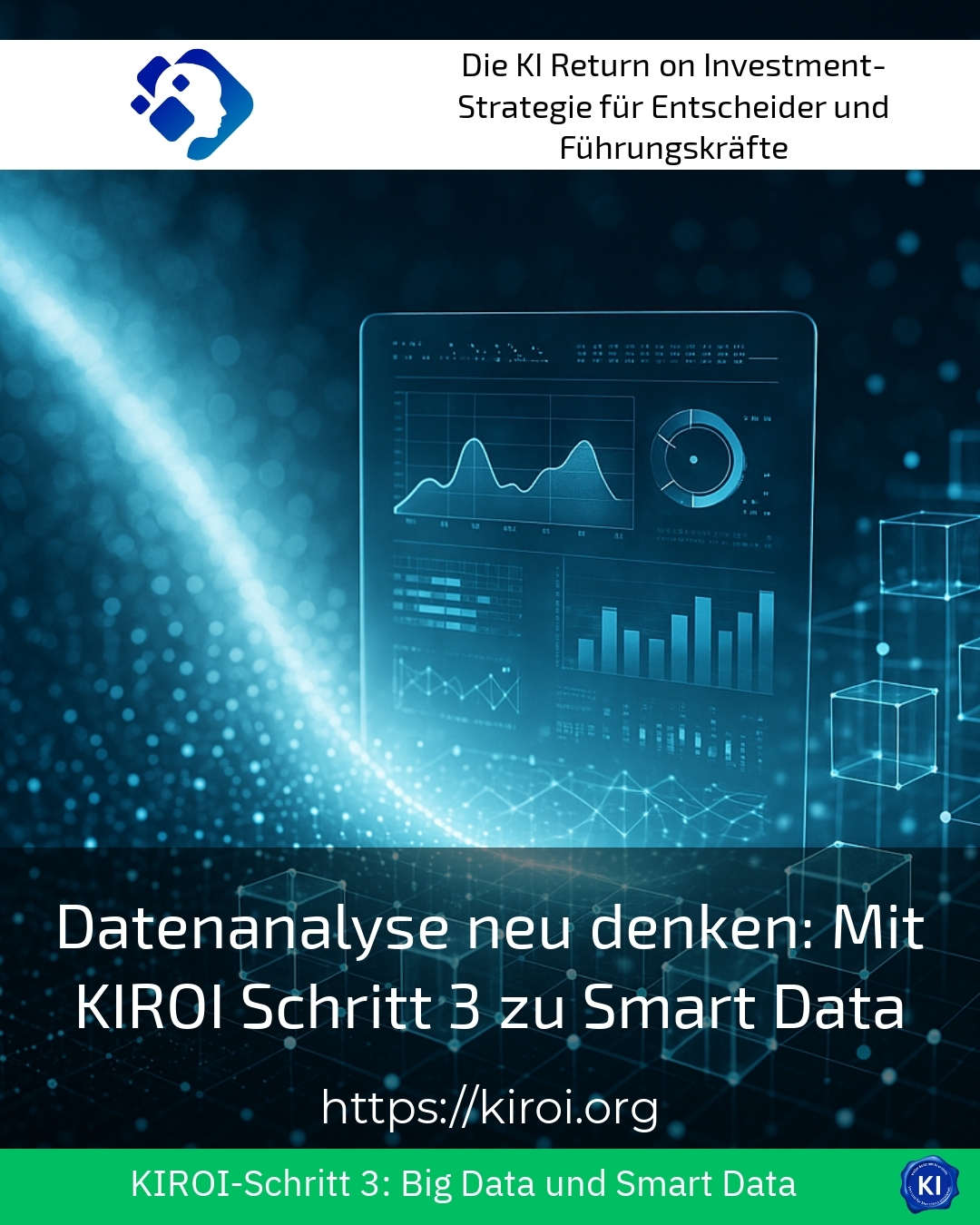The modern corporate world is changing rapidly. Data analysis is increasingly taking centre stage. However, although many organisations collect large amounts of information, they do not use it optimally. The challenge lies in gaining truly valuable insights from this data. This is exactly where a new approach comes in: Rethinking data analysis. With KIROI Step 3, the path to smart data is accompanied systematically and practically.
Why data analysis needs to be thought of differently today
In the past, it was often enough to collect data and save it in tables. Today, that is no longer enough. Companies need clear, relevant and immediately usable information. Traditional data analysis quickly reaches its limits here. Modern solutions rely on intelligent filtering, targeted processing and contextualised analysis. In this way, raw data is turned into valuable insights that support decision-making.
Example: A production company collects data from machines, sensors and employees on a daily basis. With traditional data analysis, this data is often only stored. With a new approach, it is specifically filtered, contextualised and analysed. This allows maintenance requirements to be predicted, bottlenecks to be recognised and quality controls to be automated.
Another example: In traffic management, data from cameras, GPS systems and social media is analysed. This makes it possible to optimise traffic flows, reduce congestion and adaptively control traffic lights. Here, too, it is clear that classic data analysis is not enough. Intelligent methods are needed to derive real added value from the data.
A third example: In marketing, data is collected from various channels. Traditional data analysis is often only used to evaluate individual campaigns. With a new approach, customer behaviour can be tracked across touchpoints and personalised campaigns can be developed.
Data analysis and smart data: the next level
Data analysis as the basis for smart data
Smart data is not created by simply collecting data. It is the result of targeted data analysis. This involves filtering, processing and contextualising large volumes of data. The result is clear, relevant and immediately usable information.
Example: An e-commerce company collects data on orders, clicks and customer feedback. With traditional data analysis, this data is often only aggregated. With a new approach, they are analysed specifically in order to understand customer behaviour and develop personalised offers.
Another example: In logistics, data is collected on deliveries, routes and vehicles. Traditional data analyses often only look at individual key figures. With a new approach, routes can be optimised, delivery times shortened and costs reduced.
A third example: In the healthcare industry, data is collected on patients, treatments and outcomes. Traditional data analyses often only look at individual cases. With a new approach, treatment results can be compared, risks identified and processes optimised.
BEST PRACTICE with one customer (name hidden due to NDA contract) and then the example with at least 50 words.
A medium-sized company in the manufacturing sector was faced with the challenge of utilising its machines more efficiently. Conventional data analyses only looked at individual key figures. By introducing a new approach, the data could be specifically filtered and contextualised. This made it possible to predict maintenance requirements, recognise bottlenecks and automate quality controls. Productivity increased significantly and downtimes were reduced.
Practical steps to the new data analysis
Rethinking data analysis: the three steps
1. data collection: Collect data from various sources such as sensors, IoT devices, CRM systems and web tracking.
2. data integration: Connect the data using ETL processes, APIs and middleware. This creates a standardised data picture.
3. data analysis: Use modern tools and methods such as machine learning, data mining and statistical analyses. This will help you gain valuable insights.
Example: A retail company collects data on orders, clicks and customer feedback. By integrating the data into a standardised system and using modern analysis methods, customer behaviour can be understood and personalised offers developed.
Another example: In logistics, data is collected on deliveries, routes and vehicles. By integrating the data into a standardised system and using modern analysis methods, routes can be optimised, delivery times shortened and costs reduced.
A third example: In the healthcare industry, data is collected on patients, treatments and outcomes. By integrating the data into a standardised system and using modern analysis methods, treatment results can be compared, risks identified and processes optimised.
My analysis
Modern data analysis is a decisive factor for the success of companies. It makes it possible to gain valuable insights from large volumes of data and support decision-making. With a new approach, data can be filtered, processed and contextualised in a targeted manner. This results in smart data that creates real added value. Practical experience shows that companies that rethink data analysis achieve significantly better results.
Further links from the text above:
What does smart data mean and what are the application scenarios?
Smart data: How intelligent data is shaping our future
Smart Data Analytics | DE | TÜV Rheinland
Smart data: How companies make better decisions
Big and smart data - from statistics to data analysis
Making decisions with smart data
Smart data: definition, application and difference to big data
What is smart data and how does it work?
For more information and if you have any questions, please contact Contact us or read more blog posts on the topic Artificial intelligence here.















